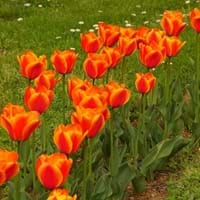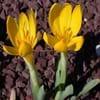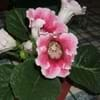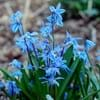Life Span
Annual
Perennial
Type
Bulb or Corm or Tuber
Perennial
Origin
Hybrid origin, Europe, Turkey, Iraq, Iran, Asia, China
Eastern Europe
Types
Parrot Tulips, Triumph Tulips, Darwin Hybrid Tulips
Not Available
Number of Varieties
Not Available
Habitat
Mountains, Temperate Regions
Terrestrial
USDA Hardiness Zone
4-8
4-9
Sunset Zone
21,22
1a, 1b, 2a, 2b, 3a, 3b, 4, 5, 6, 7, 8, 9, 10, 11, 12, 13, 14, 15, 16, 17, 18, 19, 20, 21, 22, 23, 24
Habit
Clump-Forming
Clump-Forming
Flower Color
White, Yellow, Red, Green, Purple, Orange, Pink, Rose, Coral, Peach, Burgundy, Plum, Bronze
Yellow, Lavender, Blue Violet
Flower Color Modifier
Bicolor
Bicolor
Fruit Color
Green, Tan
Not Available
Leaf Color in Spring
Green
Green, Sea Green
Leaf Color in Summer
Light Green
Green, Sea Green
Leaf Color in Fall
Several shades of Green
Green, Sea Green
Leaf Color in Winter
Light Green
Light Green
Leaf Shape
Oblong
Lanceolate
Plant Season
Spring
Spring, Summer
Sunlight
Full Sun, Partial Sun
Full Sun, Partial Sun
Type of Soil
Loam, Sand
Loam, Sand
The pH of Soil
Neutral
Neutral
Soil Drainage
Well drained
Well drained
Bloom Time
Early Spring, Spring, Late Spring
Spring, Late Spring, Early Summer
Tolerances
Drought, Shade areas
Drought
Where to Plant?
Ground, Pot
Ground
How to Plant?
From bulbs, Seedlings
By dividing rhizomes, tubers, Seedlings
Plant Maintenance
Medium
Medium
Watering Requirements
Do not water frequently, Does not require lot of watering
Average Water Needs, Do Not over Water
In Summer
Not so frequently
Lots of watering
In Spring
Moderate
Moderate
In Winter
Average Water
Average Water
Soil Type
Loam, Sand
Loam, Sand
Soil Drainage Capacity
Well drained
Well drained
Sun Exposure
Full Sun, Partial Sun
Full Sun, Partial Sun
Pruning
Cut leaves after fall, Remove damaged leaves, Remove dead branches, Remove dead leaves
Remove damaged leaves, Remove dead branches, Remove dead leaves
Fertilizers
9-9-6
All-Purpose Liquid Fertilizer
Pests and Diseases
Aphids, Gray mold, Nematodes, Red blotch, Snails
Red blotch
Plant Tolerance
Drought, Shade areas
Drought
Flower Petal Number
Single, Double, Semi-Double
Single
Foliage Texture
Medium
Coarse
Foliage Sheen
Matte
Matte
Attracts
Aphids, Caterpillar, Mites, Rodents, Squirrels
Hummingbirds
Allergy
contact allergic dermatitis
Skin irritation
Aesthetic Uses
Beautification, Bouquets, Cottage Garden, Showy Purposes
Showy Purposes
Beauty Benefits
Not Available
Not Available
Environmental Uses
Air purification
Air purification
Medicinal Uses
Skin Disorders, Skin irritation
No Medicinal Use
Part of Plant Used
Flowers
Not Available
Other Uses
Showy Purposes, Used As Food, Used as Ornamental plant, Used for its medicinal properties
Used as Ornamental plant
Used As Indoor Plant
Sometimes
No
Used As Outdoor Plant
Yes
Yes
Garden Design
Bedding Plant, Container, Cutflower, Edging, Feature Plant, Foundation, Mixed Border, Rock Garden / Wall
Alpine, Edging, Mixed Border, Rock Garden, Wall
Botanical Name
TULIPA
IRIS pumila
Common Name
Tulip
Dwarf Iris
In Hindi
ट्यूलिप
Dwarf Iris
In German
Tulpe
Zwergiris
In French
Tulipe
Dwarf Iris
In Spanish
tulipán
Enano Iris
In Greek
τουλίπα
νάνος Ίρις
In Portuguese
Tulipa
Dwarf Iris
In Polish
Tulipan
Dwarf Iris
In Latin
Tulip
Iris Dwarf
Phylum
Magnoliophyta
Magnoliophyta
Class
Magnoliopsida
Liliopsida
Family
Liliaceae
Iridaceae
Clade
Angiosperms, Monocots
Angiosperms, Monocots
Tribe
Not Available
Irideae
Subfamily
Lilioideae
Iridoideae
Number of Species
Not Available
Season and Care of Tulip and Dwarf Iris
Season and care of Tulip and Dwarf Iris is important to know. While considering everything about Tulip and Dwarf Iris Care, growing season is an essential factor. Tulip season is Spring and Dwarf Iris season is Spring. The type of soil for Tulip is Loam, Sand and for Dwarf Iris is Loam, Sand while the PH of soil for Tulip is Neutral and for Dwarf Iris is Neutral.
Tulip and Dwarf Iris Physical Information
Tulip and Dwarf Iris physical information is very important for comparison. Tulip height is 15.20 cm and width 30.50 cm whereas Dwarf Iris height is 10.20 cm and width 15.20 cm. The color specification of Tulip and Dwarf Iris are as follows:
Tulip flower color: White, Yellow, Red, Green, Purple, Orange, Pink, Rose, Coral, Peach, Burgundy, Plum and Bronze
Tulip leaf color: Green
Dwarf Iris flower color: Yellow, Lavender and Blue Violet
- Dwarf Iris leaf color: Green and Sea Green
Care of Tulip and Dwarf Iris
Care of Tulip and Dwarf Iris include pruning, fertilizers, watering etc. Tulip pruning is done Cut leaves after fall, Remove damaged leaves, Remove dead branches and Remove dead leaves and Dwarf Iris pruning is done Remove damaged leaves, Remove dead branches and Remove dead leaves. In summer Tulip needs Not so frequently and in winter, it needs Average Water. Whereas, in summer Dwarf Iris needs Lots of watering and in winter, it needs Average Water.





